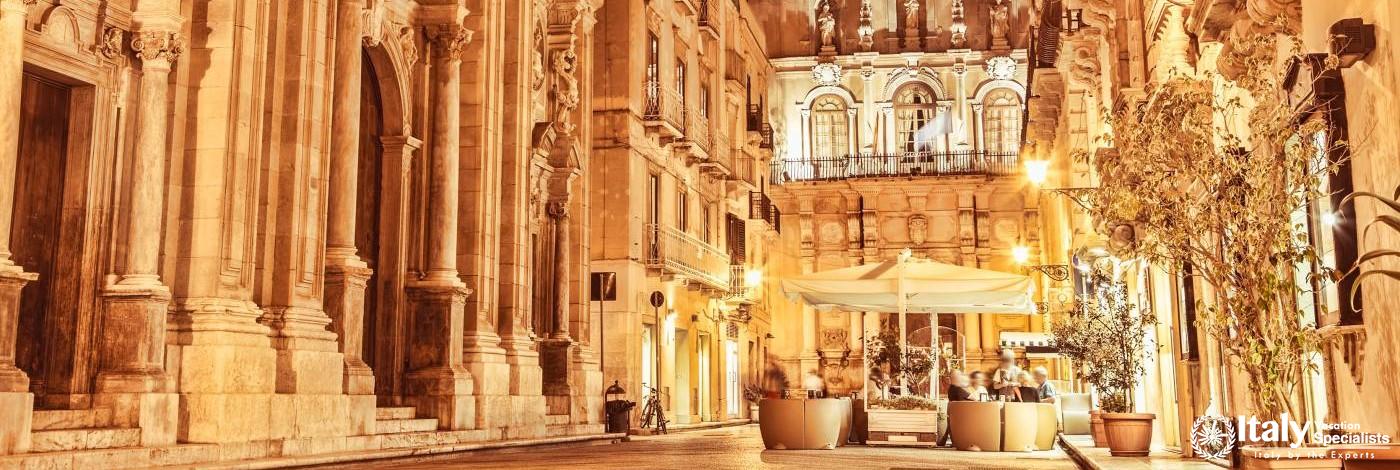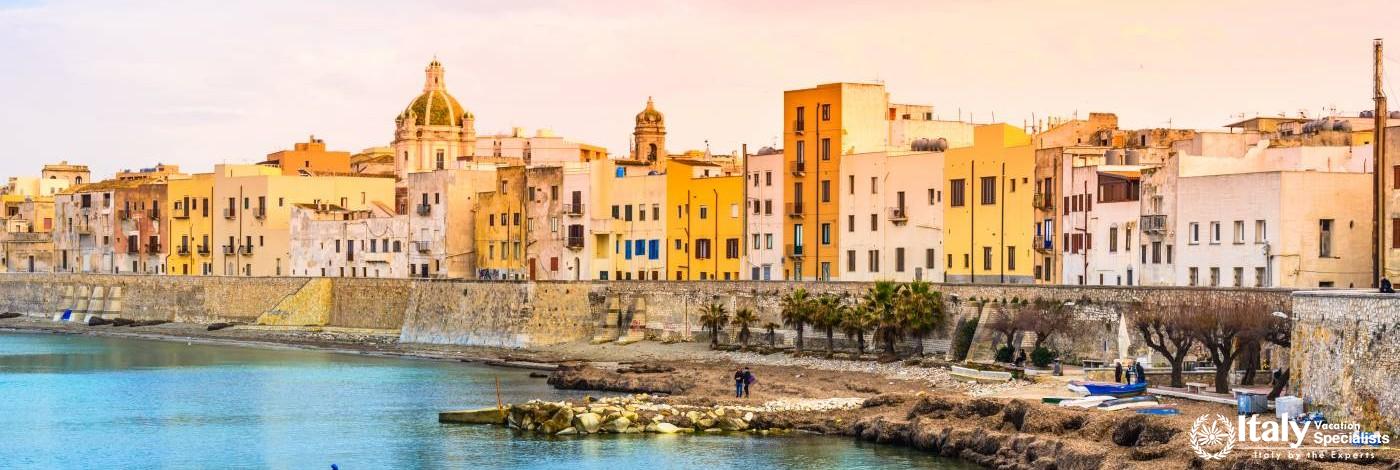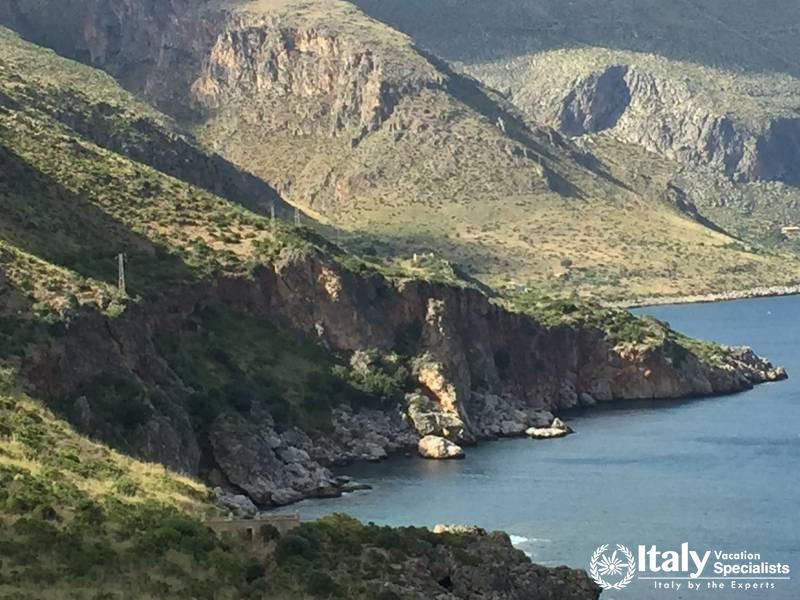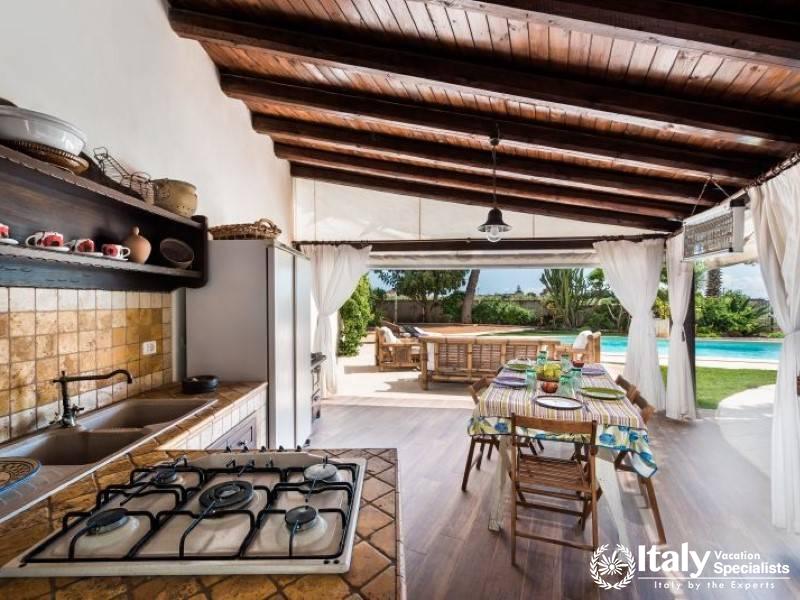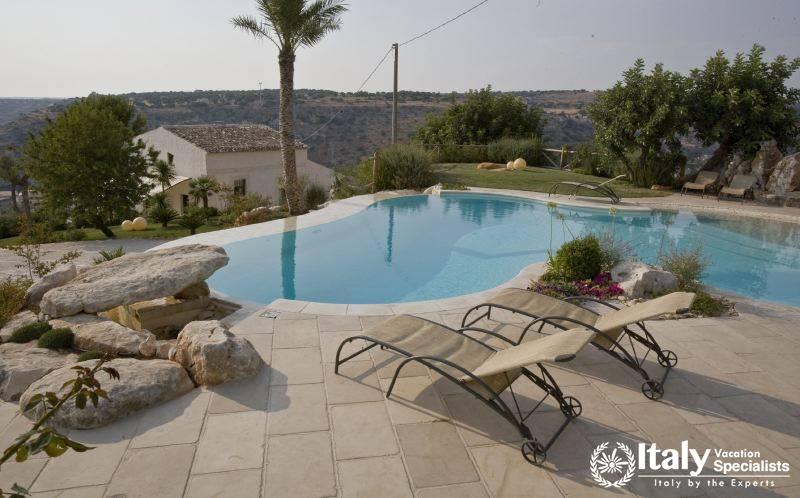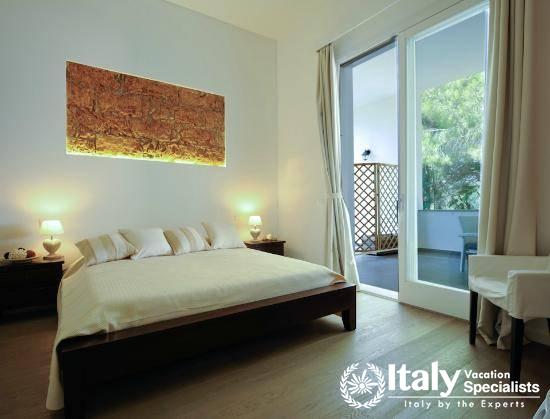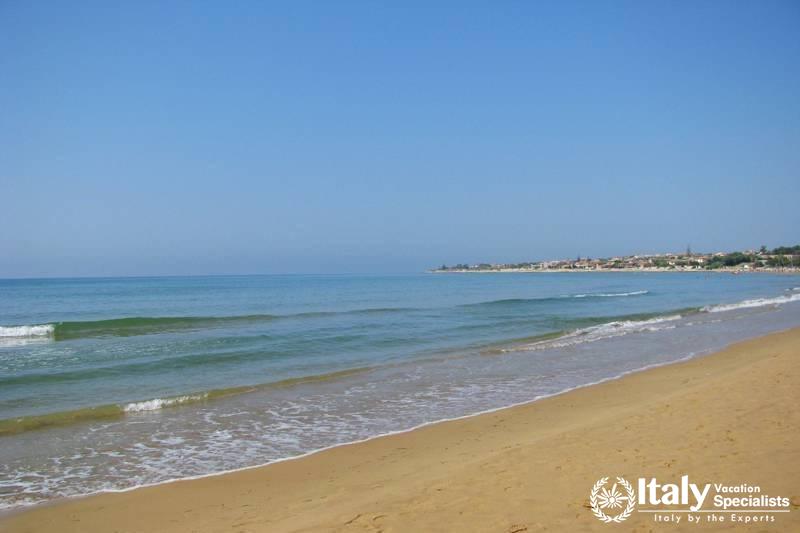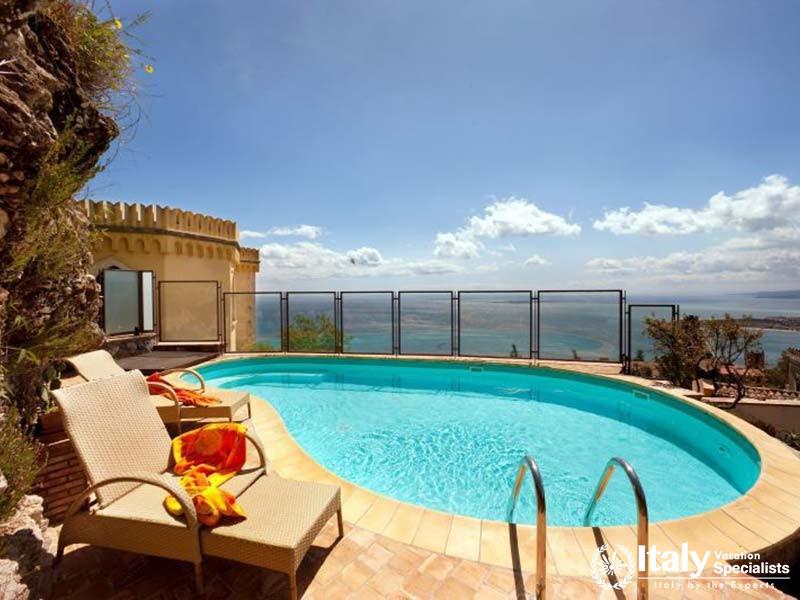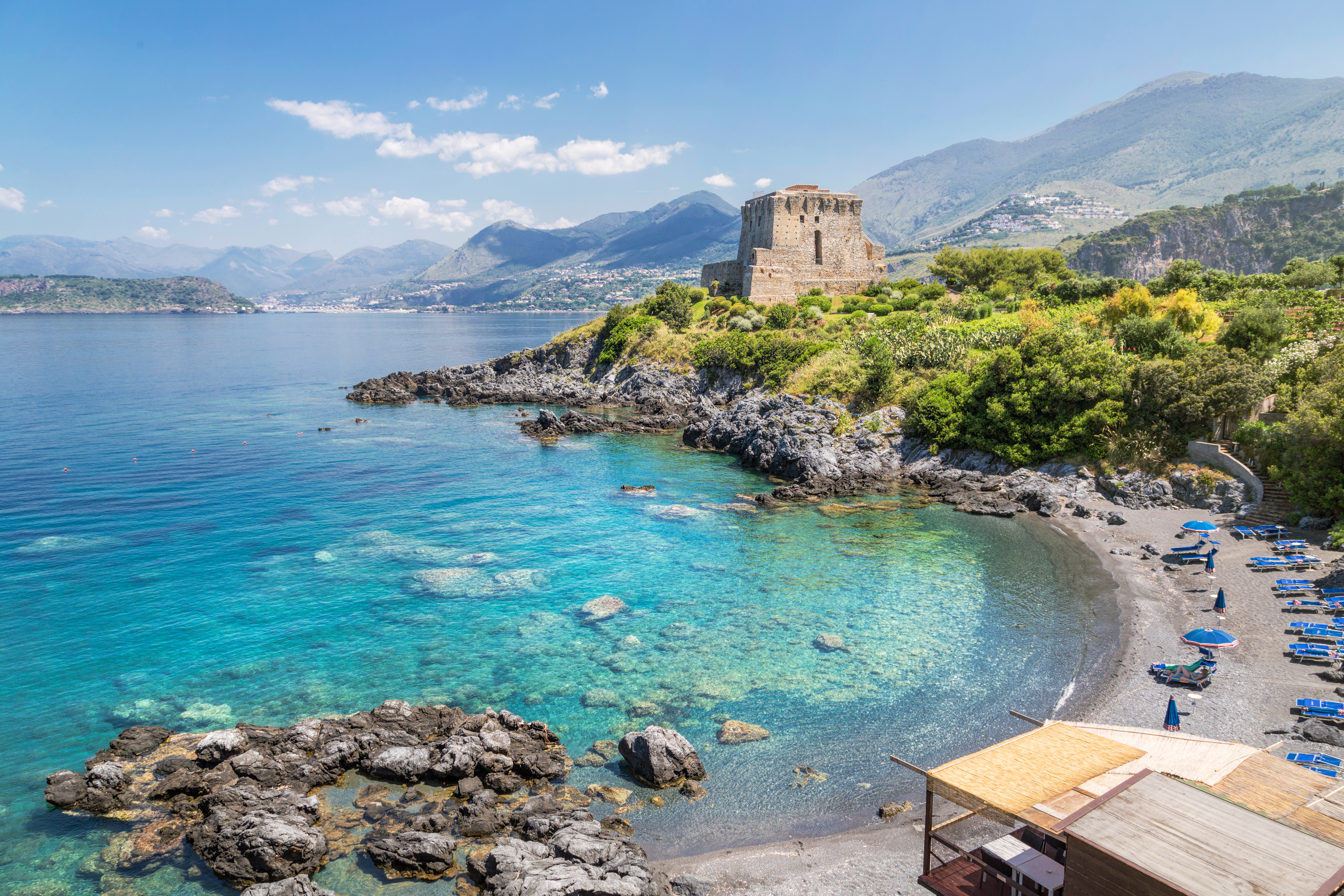Overview
Trapani is a "modern" port city with a pedigree that dates to the stone age. It's local economy is still based on its traditional industries of salt production and fishing, but tourism plays an increasingly important role, and the city, we must report, is an important port for the Sicilian mafia for the exportation of drugs.
The Greeks called Trepani, "Drépanon", their word for sickle, because of the shape of the peninsula upon which most of the city sits. They and every succeeding power left its impact on local customs, traditions architecture and cuisine, making Trepani one of the most fascinating of all Sicilian cities. Trapani also serves as the port for the town of Erice, which sits high above on Mount San Giuliano, and can be reached by cable car.
New quarters and piazzas were added to the ancient city between the 13th and 15th Centuries when Trepani was at the height of its prosperity. The cities fortunes declined during the 16th Century, but during the reign of Emperor Charles V, the city was fortified with new walls and massive bastions. For a time, the city grew prosperous once again, thanks largely to the expansion of salt production and fishing, but during the 17th century, the economy declined once more and the city, like most of Sicily, stagnated, and to an extent, remains that way today.
During the Second World War, Trepani was subjected to intense Allied aerial and naval bombing which destroyed large swaths of the old city. As a result, much of the "new" city has been rebuilt with modern, often uncomely buildings and straighter, and less interesting, avenues and streets.
Regardless of the the destruction wrought by the Allies, there are many things of interest in Trepani. A walk along the Lungomare gives you a sense of the city's ageless character, and a drive along the Via del Sale, the salt road, offers a compelling glimpse of the importance of the salt trade.
If you arrive in June, you can watch the harvest of tonnere fish on the beaches, a practice which has been going on for centuries. Fisherman use the "mattanza" technique to capture the migrating tonnere. Huge twine nets are cast to create a fish coral into which thousands of unsuspecting tunny swim. When the time is right, the coral is closed, and the fish driven to shallow water where armies of men beat them to death with clubs. Bloody, and of course, outrageous to the modern mind, but fascinating.
In the city itself there are several significant buildings and monuments. Trepani is an Episcopal center, so there is a cathedral (built in 1635) and various other churches including Chiesa Sant'Agostino (14th Century), Chiesa Santa Maria di Gesu (15th-16th Century), and the Basilica of Maria Santissima Annunziata (1315-1332, but rebuilt in 1760). The Palazzo della Guidecca was built in the Baroque style and is of interest, as is the Palazzo Cavarretta and the Casa Ciambra. Look for the Fontana di Tritone in the main piazza.
Near Trepani are other places which travelers can enjoy. A ferry ride to the Egadi Islands where you can step back in time is a marvellous way to spend a day. A short drive to see the impressive Doric temple at the ancient Greek city of Segesta is a must. Find your way to the Riserve Naturale dello Zingaro for another day trip, and don't forget the unforgettable Erice way up on Mount Guiliano, and accessible by cable car.
Interested in a little history? First occupied by the Sicanians, a paleolithic tribal group, Trepani became, in turn, a Greek colony, a Phoenician port-of-call, a strategic base for the Carthaginian empire, and after the defeat of Carthage by the Romans, in a naval battle of the nearby Egadi Islands in 241 BC, a minor Roman trading center.
After the fall of Rome, in AD 440 it fell into the hands of the Vandals, but in AD 477 they in turn succumbed to the power of the Byzantines, whose rule only lasted until Sicily was conquered in 830 AD by Muslims.
But nothing lasts forever, and Trepani, following the course of history for all of Sicily, came under the domination of the Angevin Normans who conquered it in 1077 AD and elevated to the status of a royal city. Then Sicily fell to the Spanish Arogonese who were ultimately displaced by the Holy Roman Empire, which evolved into the Kingdom of Sicily, then into the Kingdom of Naples, where it remained, except for a short time during the Napoleonic conquest, until Sicily was, after the Bourbon uprising and the battles of Garibaldi and his armies, unified with Italy in 1861.
The surface of Trepani may be a bit rough at the edges, and its role in Mafia criminality may be off-putting. But travelers are safe and taking time to understand and penetrate its mysteries and mythologies, has its glorious rewards.
Gallery
Location
Private and Small Group Tours
Multi-Day Holidays Tours
Villas
Apartment
Gallery
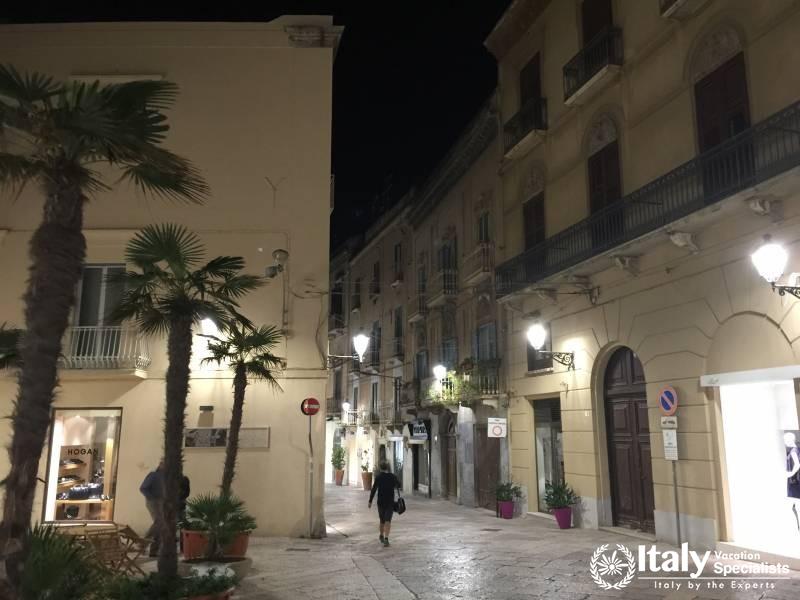

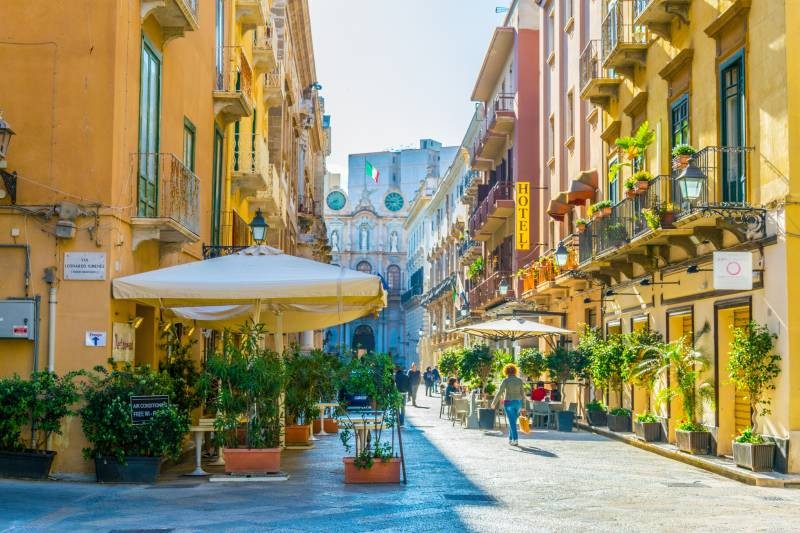
Our Private and Small Group Tours
For Customized Holidays and Expert Advice, for travel in Italy and the Mediterranean,
get in touch with your travel agent or contact us via our
Trip Planning Questionnaire.
-
Direct In Italy: +39 375 823 5314
-
Toll Free: 1-866-779-2565
